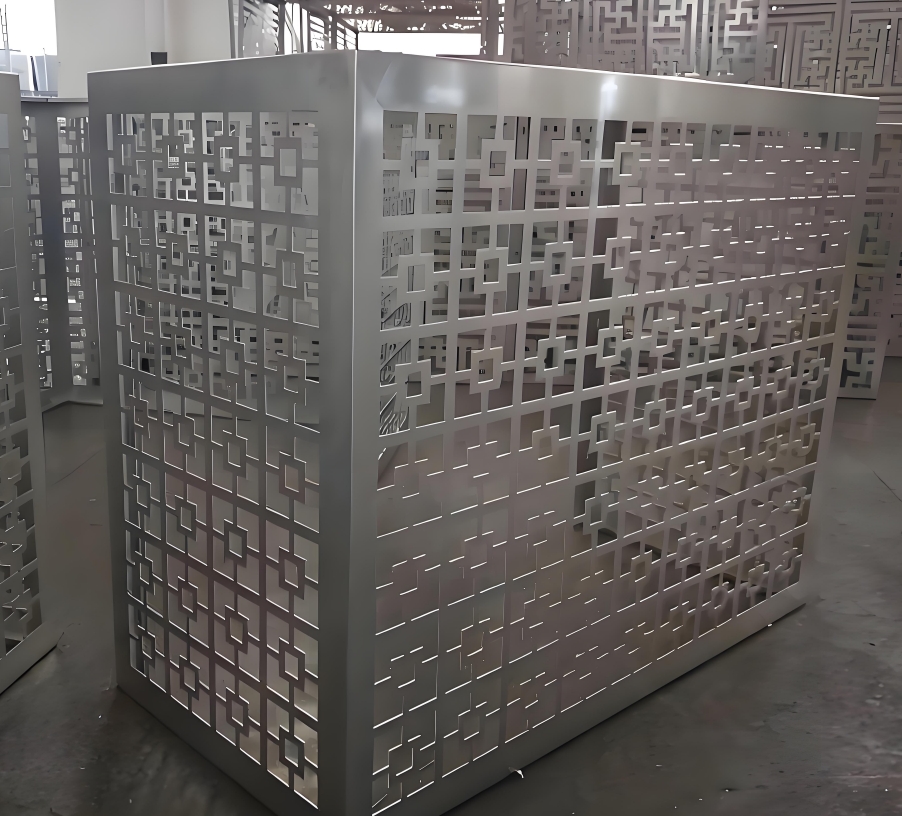https://www.tiktok.com/@janeliu18
Perforated Metal for Decoration: A Modern Design Element
Perforated metal, also known as perforated sheet or perforated panel, is a versatile and stylish material widely used in architectural and interior design. By punching precise holes into metal sheets, designers create visually striking patterns that combine functionality with aesthetics. Its applications range from building facades to decorative screens, offering durability, customizable designs, and unique light-play effects.
1. Materials & Finishes
| Material | Properties | Common Uses |
|---|---|---|
| Stainless Steel | Corrosion-resistant, high-strength, polished/matte finishes | Luxury facades, modern interiors |
| Aluminum | Lightweight, easy to shape, anodized colors (gold/black/bronze) | Ceiling panels, decorative screens |
| Galvanized Steel | Cost-effective, durable (powder-coated for color) | Industrial-style partitions |
| Brass/Copper | Warm metallic tones, develops patina over time (can be sealed) | Artistic installations, high-end decor |
Popular Finishes:
- Powder Coating: Custom colors (e.g., RAL/Pantone).
- Electroplating: Rose gold, black nickel.
- Laser Cutting: Intricate custom patterns.
2. Hole Patterns & Design Flexibility
(1) Hole Shapes
| Shape | Visual Effect | Design Tip |
|---|---|---|
| Round Holes | Clean, minimalist; controls light/ventilation | Linear or staggered layouts |
| Square Holes | Sharp geometric appeal; dynamic shadow effects | Gradient density for depth |
| Hexagonal | Honeycomb-like texture; soft light diffusion | Nature-inspired themes |
| Custom | Logos, abstract designs, or organic shapes | Brand identity or art pieces |
(2) Layout Styles
- Uniform Grid: Symmetrical and modern.
- Gradient: Hole size/spacing changes gradually for motion effects.
- Image-Based: Pixelated artwork or text.
3. Key Specifications
| Parameter | Typical Range | Impact |
|---|---|---|
| Thickness | 0.5mm–6mm | Thicker panels (≥2mm) for outdoor use; thinner for curved installations. |
| Hole Size | 1mm–50mm | Small holes (≤5mm) for privacy; large holes for transparency. |
| Open Area | 10%–70% | Balances light/ventilation with structural integrity. |
| Pitch | ≥1.5× hole diameter | Ensures sheet strength. |
4. Applications in Design
(1) Architectural
- Facades: Combines sunshading with artistic expression (e.g., backlit at night).
- Balcony Screens: Privacy + airflow.
(2) Interior
- Ceiling Panels: Acoustic perforated metal with sound-absorbing backing.
- Room Dividers: Laser-cut decorative screens.
- Furniture: Cabinet doors, lamp shades, tabletops.
(3) Artistic & Landscape
- Sculptures: 3D metal art installations.
- Garden Fences: Weather-resistant designs.
5. Advantages
✔ Durability: Resists weathering, fire, and UV rays.
✔ Customization: Unlimited patterns, colors, and sizes.
✔ Functionality: Enhances ventilation, lighting, and acoustics.
Tip: For outdoor projects, choose marine-grade stainless steel (316) or coated aluminum to prevent rust. Pair with LED lighting to highlight perforation patterns at night.
Whether for a bold architectural statement or subtle interior detailing, perforated metal offers endless creative possibilities
Post time: Apr-15-2025
